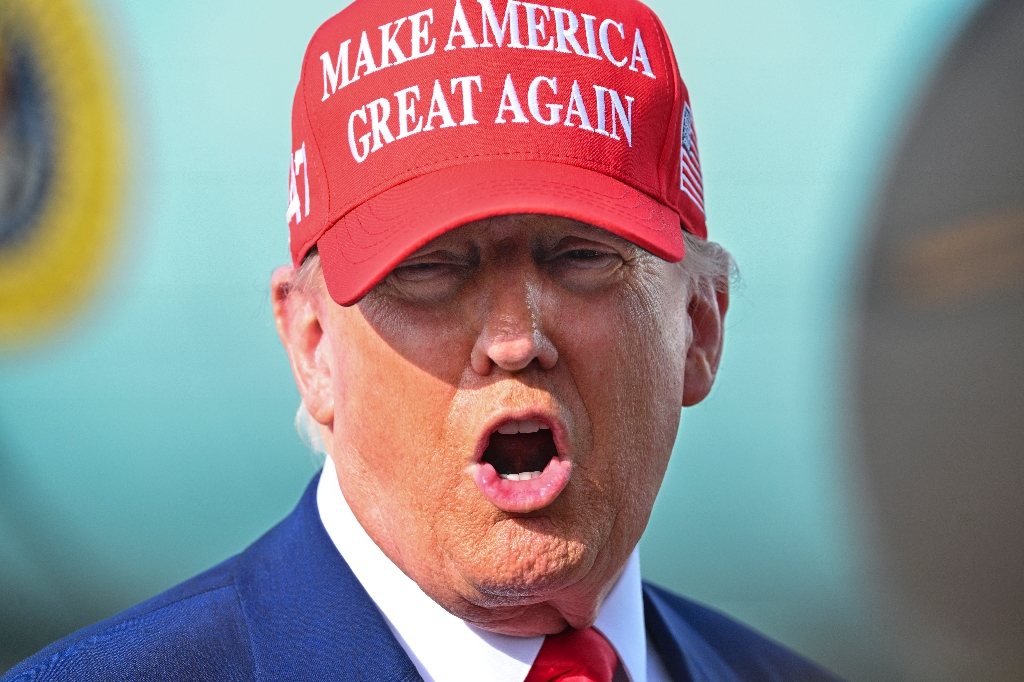New York (AFP) – Boeing’s safety practices were under fresh scrutiny Wednesday at a US Senate hearing highlighting company critics, including an employee who has characterized the top-selling 787 as prone to disaster.
In a preview of his congressional testimony, Boeing engineer Sam Salehpour said in an interview broadcast Tuesday night that the 787 Dreamliner should be grounded immediately because of the risk it could “fall apart” mid-air, he told NBC.
Boeing, which has faced significant scrutiny since a near-catastrophic incident in January, sought on Monday to proactively defend itself, hosting a media event with two senior engineers who provided detailed explanations attesting to aircraft safety and rebutting Salehpour’s claims.
The 787 on Wednesday received an endorsement from United Airlines Chief Executive Scott Kirby, who told CNBC he was “totally confident the 787 is a safe airplane.”
Wednesday’s hearing, titled “Examining Boeing’s Broken Safety Culture: Firsthand Accounts,” is chaired by Democratic Senator Richard Blumenthal of Connecticut, who said Boeing “has really hit a moment of reckoning” in an interview with CNBC Wednesday ahead of the hearing.
Blumenthal urged the Department of Justice to investigate whether Boeing violated a 2021 deferred prosecution agreement that settled violations after the 2018 and 2019 crashes of two 737 MAX aircraft. Such a move could expose Boeing and its management “to potential criminal liability” as well as stronger fines, said Blumenthal, who said the panel intends to call Boeing at a future hearing.
Besides Salehpour, the witness list includes former engineers with Boeing and the Federal Aviation Administration (FAA) who now work at the Foundation for Aviation Safety, which has also criticized Boeing’s practices.
The fourth listed witness is former pilot Shawn Pruchnicki, now at Ohio State University, who expressed skepticism about Boeing’s statements in a recent CNN interview.
Boeing has said it will cooperate with the inquiry.
– FAA sign-off –
The hearing comes as regulators escalate scrutiny of Boeing in the wake of a near-disastrous January 5 Alaska Airlines flight, in which a 737 MAX was forced to make an emergency landing after a fuselage panel blew out in mid-flight.
The incident revived major questions around Boeing’s safety practices that had initially arisen following two fatal crashes in 2018 and 2019, but which had later subsided following a lengthy grounding of the 737 MAX.
Salehpour has alleged that the 787 Dreamliner contains gaps between parts well above company standards, a dynamic that could “ultimately cause a premature fatigue failure without any warning,” creating unsafe conditions “with potentially catastrophic accidents,” according to an official complaint to the FAA released by his attorneys.
The gap issue was one of the factors in the 2020-22 period during which Boeing halted deliveries for stretches.
Boeing has dismissed the concerns as unfounded, noting on Wednesday that the 787 has safely taken more than 4.2 million flights and that the company addressed the gap issue and met the approval of US air regulators.
“Extensive and rigorous testing of the fuselage and heavy maintenance checks of nearly 700 in-service airplanes to date have found zero evidence of airframe fatigue,” Boeing said. “Under FAA oversight, we have painstakingly inspected and reworked airplanes and improved production quality to meet exacting standards that are measured in the one hundredths of an inch. We are fully confident in the safety and durability of the 787 Dreamliner.”
An FAA spokesman said the agency’s evaluation of the 787 included requirements “to ensure the aircraft are safe for flight” after the gap issues were raised.
“Every aircraft flying is in compliance with the Airworthiness Directive (AD),” the FAA spokesman said. “Boeing has either completed or is working on long-term corrective actions. The FAA continues to issue Airworthiness Certificates for every Boeing 787 before they enter service.”
Shares of Boeing fell 1.0 percent in morning trading.
© 2024 AFP




